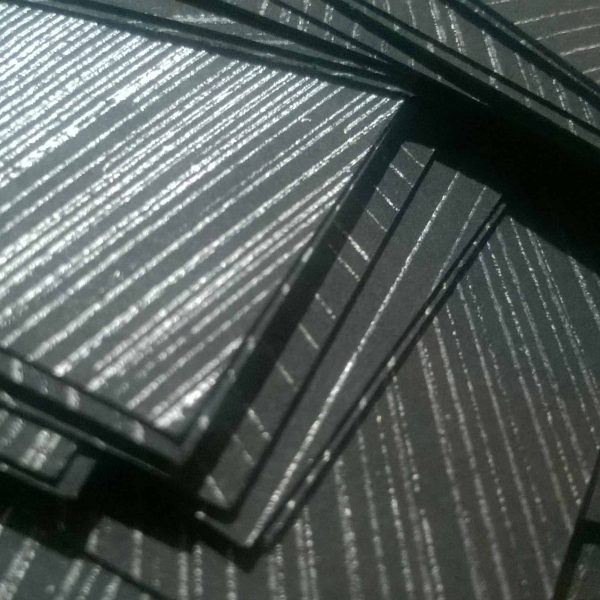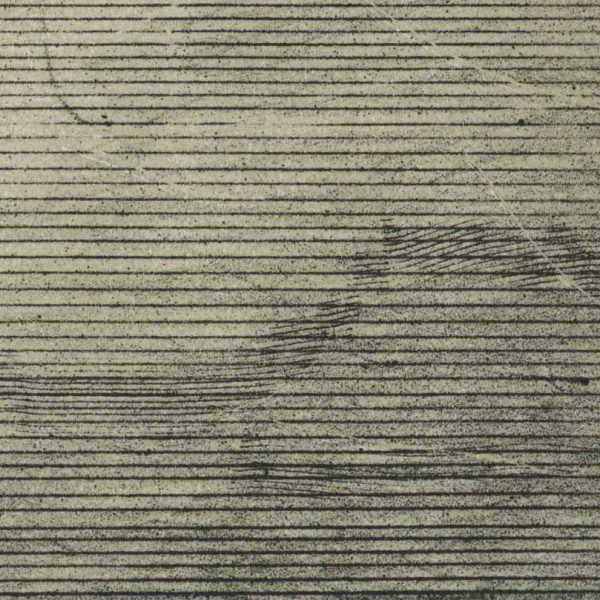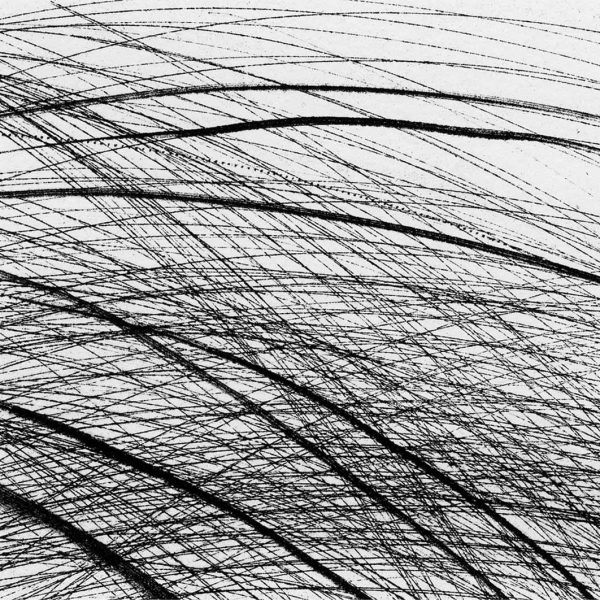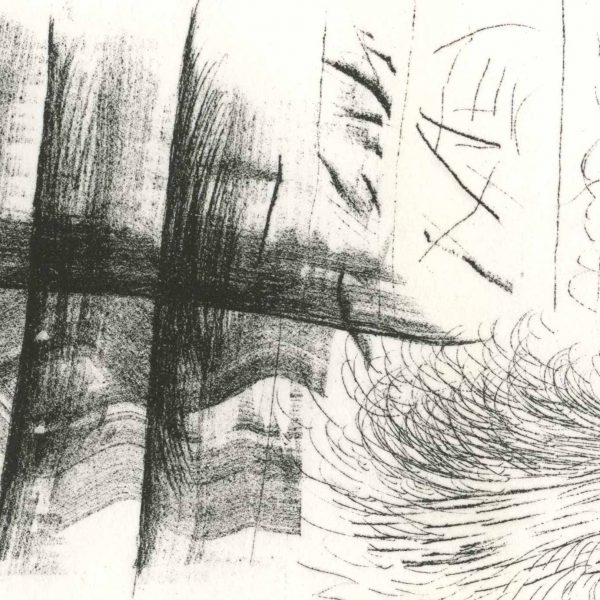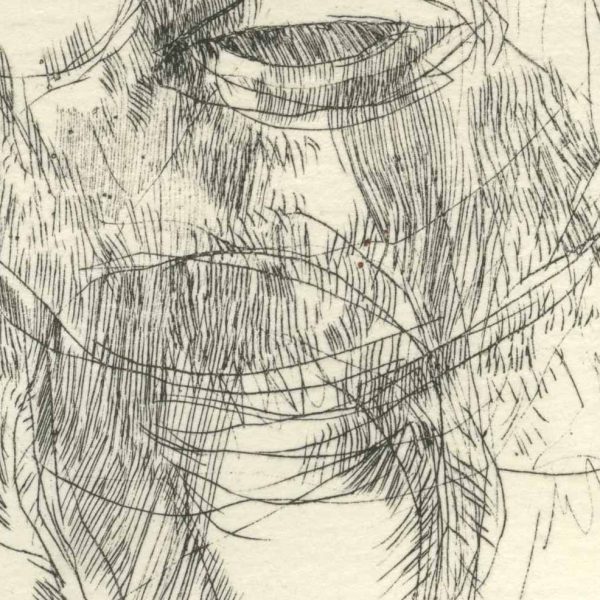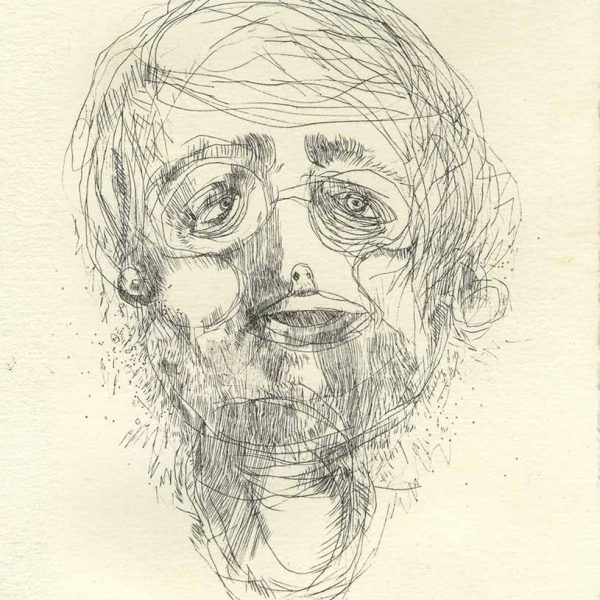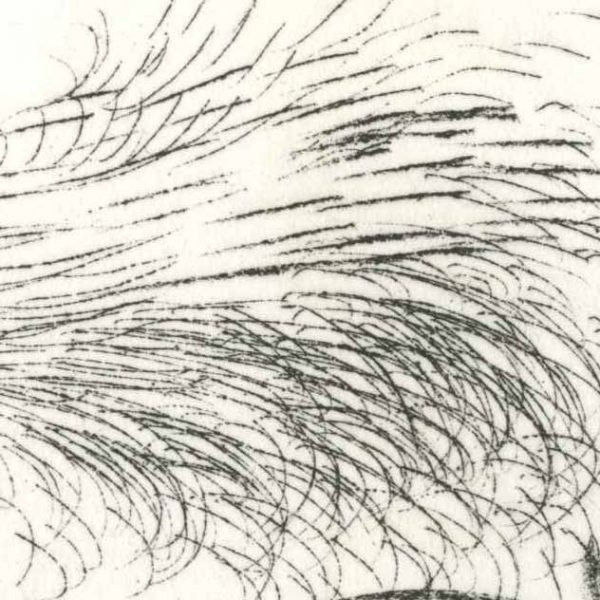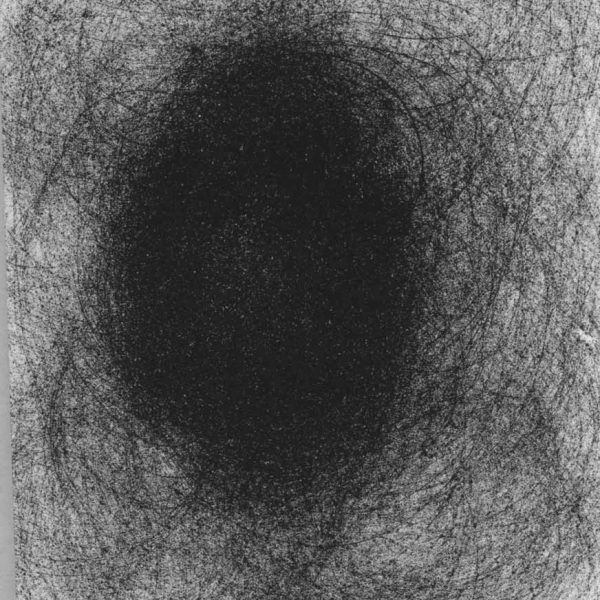Stone engraving – dry point on stone (positive)
Materials:
- arabic gum
- shellac
- asphalt

A drypoint, or gravure, on stone is one of the easiest lithographic techniques. It is made using the same tools as those used in intaglio techniques. And just like with a drypoint on metal plate, the most important thing is the quality and sharpness of the tools being used.
The dry point allows drawing thin, precise lines, the thinnest in the arsenal of lithographic techniques.
A well, finely grinded lithographic stone should be covered with a thin layer of gum arabic (evenly distributed with a cheesecloth so that there are no streaks).
After drying the layer of gum – basically after a few moments – you can start drawing. You can make a sketch with pencil or other dry drawing material, because the layer of gum arabic protects the stone.
The tools should be sharp. You have to be careful with pressure – to leave a trace it is necessary to cut through a thin layer of gum and reach the surface of the stone, but not too deep. Too deep traces will not accept paint and instead of a single sharp mark two thin ones will appear on both edges. Scratches that are too deep will be difficult to remove while graining the stone.
In addition to the classic tools: needles, knives, other types of blades, it is worth testing other sharp tools and materials like sandpaper, materials that disturb the surface…
While drawing, you must be careful with water. Moisture will dissolve the layer of gum arabic and gray or black spots may appear.
Rub the finished drawing with shellac and then with asphalt. Then moisten an roll up the stone.

